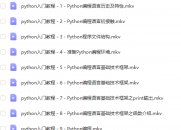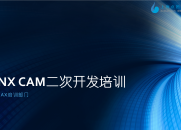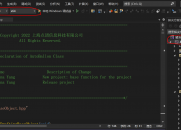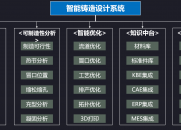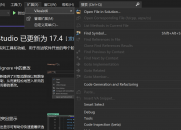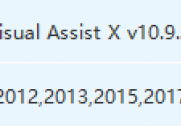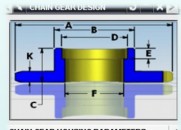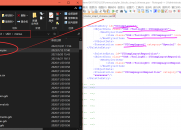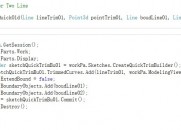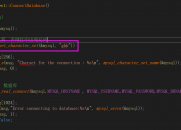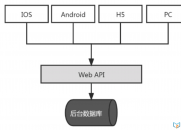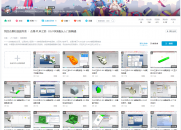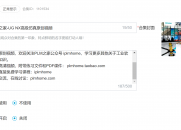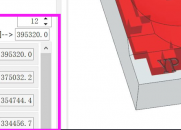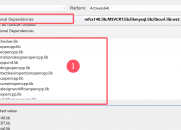|
|
请使用QQ关联注册PLM之家,学习更多关于内容,更多精彩原创视频供你学习!
您需要 登录 才可以下载或查看,没有账号?注册

x
: ^$ K# L" Z/ n* ?( K. s$ H& g' m2 t4 r; p: m+ O8 l
" ]' x* }1 }+ E: P% w
" x4 ~3 H1 @* Q2 o* A- V0 J& k首先认识下关于菜单的后缀文件
9 J% Q& L1 F5 y. V- f7 s0 O q/ J; ^/ K) p' I* i* N! X; D
| | .tbr | Toolbar | .grb | Group | .gly | Gallery | .ddb | Drop-down | .rtb | Ribbon tab | .csb | Cascade | .abr | Attachment |
$ g: P3 Q" B/ D$ {1 C& w
9 G( ~7 Q" m! w+ P* L2 r2 @5 L
RTB作为菜单ribbon 界面定义的关键,详细信息如下
3 J, o8 D& }6 ?7 d3 O7 {+ r9 z- ~1 F l! E
; z' Y# s# F1 V
customer_ribbon_tab.rtb* T `2 i1 I) v; k( _
!
/ q2 [- p6 s# i ?% {9 g- Y$ {! Customer Ribbon Tab& ]0 R, B& e+ Y1 L1 c8 y
!
+ m+ z9 N' e2 o# v' W3 X! This file will create a new customer tab containing three groups and/ }2 L v4 e; b# K5 u$ Z
! one top level button.
9 f5 l' n8 f& v- c!
: L4 q" U/ |( n2 d+ M7 n" ]
$ l3 E! u, _" \7 l. u8 _ I; W! V' CTITLE Customer Tab
" R1 E, R7 p) o1 J( l* \VERSION 170
9 {! s5 f* }2 d; z; B5 C5 C/ f) |) g5 n
! The first group represents a Ribbon group that references an existing
( }8 Y( T% J Y* l1 C! o! p0 r! toolbar with no Ribbon style changes. - C% ^3 u* n! I
! 5 @ q' @$ F; K
! This is the quickest way to add existing toolbar content into Ribbon mode.( S1 _: {' d5 B( E6 O I+ ?
!
8 `0 j- u0 m2 p( b' ~! D7 NGROUP customer_toolbar.tbr/ E* m: h8 F; O4 G; \% w5 Y/ L
! 如果想直接切换tbr 到 rtb,这是最快的
- ^' M! _, p- V! H5 D; L! The second group represents a Ribbon group that references an existing
. O0 C* G! ^7 H6 N2 [) i# x! toolbar with Ribbon specific style changes added to it. There is no difference- V0 D# p5 Y ^7 B# x- M
! in how this toolbar is referenced in the .rtb file compared to the first
# h. u3 a+ S4 S% m6 |" l! toolbar as a group. The only differences from the first group exist within
, q9 [3 f$ P7 e! the .tbr file itself.+ w2 ~3 S( T/ I- d& F2 y
!
: p( J; p- F* s7 u/ C- j0 r! This approach has advantages for customers that will deploy both Ribbon and
& O3 M% I- n6 |$ }' c' J a- K/ _5 s! Classic Mode customizations since all the content is defined in the .tbr 6 e' }$ \/ u# l/ Q0 q% n$ V
! file and it will stay synchronized in both modes. Only one set of customizations# P A3 v( b7 w. L- E
! will need to be maintained while still making use of RIBBON_STYLE to
3 ^! t* {: [& w* l* X8 W! control the presentation of the buttons on the Ribbon.0 E- |) d2 z8 @! F1 {- o
!
/ w! ~: [ |1 }5 t" ZGROUP customer_toolbar_alternate.tbr
7 R1 n2 e$ W _ - K0 {" ]/ f% p+ S, L1 c
! The third group represents a Ribbon group that has been created explicitly9 j' V7 X* i4 u! `
! as a Ribbon group and will not exist in Classic Toolbar mode. This is the& `$ K% z& o+ G5 I
! preferred option since the user will be able to take advantage of all the ! X, Z# R4 h, `6 c; ~
! layout styles and containers offered by the Ribbon.
8 w- I. X) S( u$ L, h$ G!( N# H& H5 J! S, M$ D, ~
! For customers that will deploy both Ribbon and Classic Mode customizations, 6 {( U9 `4 D1 ~2 Q/ \
! this approach will result in no synchronization and two sets of customizations
4 Q( K( K! N, W7 _- |1 m! will need to be maintained.& a3 O1 Z8 K$ k+ _' l2 H8 \ @
!" w4 V( _* _( Q% S0 x
! A group can alternatively be defined directly inside the .rtb file by using the
1 T: E0 {5 i. e! keywords BEGIN_GROUP and END_GROUP. - |5 v3 y% X2 l4 n
!
0 W8 A7 W4 W* z+ z$ d: t6 ^GROUP customer_group.grb3 g3 M; B2 c% c: @
6 e# a- F- Q, G+ E' x) D* C
! Example of a button that is placed directly on the Ribbon without being
4 O( U5 ?) k* O* U- Q* {! contained in a group. This is a simple way to add a button to a tab g) m9 Q6 p: f1 T* `6 D
! but is not recommended for many buttons since groups have advantages.
) }% A! g' u& e) R8 r$ M7 G!
: w5 g% R0 @0 k' H6 s! {! A few advantages of groups:9 P O- b9 e* ?# f
! 1. Easier to move many buttons around together in quick customization.
2 ?2 v' ?7 a, `- ]/ S! For example, MB3 on a group and choose "Add to Left Border Bar". 8 d# C/ N+ s5 F& r* }' F
! This will move the whole group to a new location. If buttons are $ E9 r2 E+ f) F3 u4 c
! not in a group, they need to be moved one at a time.& w" n6 n& Y, W, E1 u
!
& z' F1 X9 l0 ~* o3 B! A3 ]! 2. Provide a label to describe its contents.
2 _8 A2 K# B y- c z% y!6 Z, q0 ^5 C5 D5 F
BUTTON CUSTOMER_BUTTON_14 m! H7 z: F A# |5 |
LABEL Button1 Directly on Tab
4 w# R7 M" I! p6 d, R# Z* I2 v# M% t- o) U" C0 v- f
部分菜单可以单独写成group gallery 作为对应后缀,重复调用
. {3 b I1 k7 I3 p2 G! Example of a gallery defined in a GRB file.
u" i- M v7 D. Z' ~! 3 r/ R. R# |' I) N( |
! If this gallery is to be used in other places, then it could be
: s; G2 X# V9 c: c3 \: T5 L2 f+ r9 O! defined in its own gallery (GLY) file and referenced here. a! M- J4 R% V1 H+ s5 D% V
! Example:8 K# V' p& ^: @+ w
! GALLERY customer_gallery.gly5 T# P5 l* U" o) E% Y
!
$ n- L6 [8 h0 H/ EBEGIN_GALLERY CUSTOMER_GALLERY6 D# N2 A1 n! z' a
COLUMN_IN_RIBBON 2) z9 N9 h* Y4 O. ~0 G0 j( A
COLUMN_IN_POPUP 2! }# X+ {' \+ ?
LABEL Gallery- Y" t! S. I( y8 h; K( p2 a6 H* x
GALLERY_STYLE MEDIUM_IMAGE_AND_TEXT; x* d6 R* \. G8 N: k3 {) b
5 i c+ h/ o6 A BUTTON CUSTOMER_BUTTON_2
* z8 R) b0 q2 F2 T: y# w' F! _
4 V" ^* H1 b0 i+ P3 G5 `% M BUTTON CUSTOMER_BUTTON_3
! d. \ ^9 V9 V* k. h. Q
- M+ h3 ]* L1 @0 F& _1 e BUTTON CUSTOMER_BUTTON_40 S: }: {& q- J+ ^" @9 r( n: m
3 Z/ q- i' t0 M0 A& n
BUTTON CUSTOMER_BUTTON_59 }9 N5 D: h4 p4 N- ?/ x; U
+ i) ~. }3 |2 k; _1 G$ D- r
END_GALLERY
( \+ v1 ~4 P' G# h4 {9 t5 ?4 j& b+ E0 i6 l! Y
|
|
